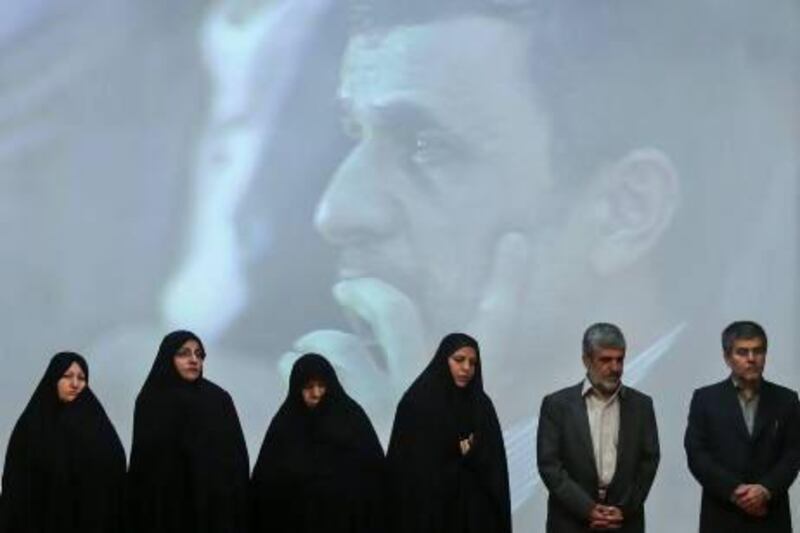Iran declared yesterday that it had started production at two uranium mines and a processing plant and vowed that western opposition would never slow its nuclear programme.
For its part, the United States unveiled a cheap and experimental but "revolutionary" new laser weapon that it plans to deploy for the first time in the Arabian Gulf, apparently as a warning to Tehran.
The twin moves – whether or not coincidental – come just days after the latest round of nuclear talks between Iran and six world powers, including the US, ended in deadlock at the weekend.
The geopolitical drama coincided with geological upheaval as a 6.3-magnitude earthquake struck in south-west Iran. It caused widespread damage and killed at least 30 people, according to state media, and stoked regional fears about the safety of Tehran's Bushehr nuclear facility
In defiant mood, Mahmoud Ahmadinejad, the Iranian president, urged his country's atomic scientists to accelerate their work "without any interruption".
Hailing the opening of the uranium mines in a speech marking Iran's national nuclear technology day, he scoffed that world powers had "tried their utmost to prevent Iran from going nuclear, but Iran has gone nuclear".
He continued: "This nuclear technology and power and science have been institutionalised.
"All the stages are in our control and every day that we go forward a new horizon opens up before the Iranian nation."
He advised the West: "Cooperation with the Iranian nation is the best solution for you."
Iran insists that the West recognises its right to a domestic nuclear-fuel cycle and lifts all sanctions before it curbs the most sensitive parts of its atomic programme.
As Mr Ahmadinejad spoke, Iranian state television broadcast ceremonies at Iran's biggest uranium mine at Saghand and a uranium ore concentrate plant in Ardakan, both in central Iran.
None of the facilities represents breakout technology for the Islamic republic, which has run similar operations for years.
But, assuming Tehran's claims are genuine, the mines could give Iran greater self-sufficiency in making the raw materials for enrichment to nuclear fuel and potentially, for weapons-grade material, experts said. Iran has repeatedly insisted that its nuclear programme was solely peaceful in nature.
While the latest nuclear talks ended in stalemate, both sides have declared a commitment to a diplomatic solution to the decade-old standoff. Negotiations will continue, although a time and place have yet to be established.
But true to past form, each side has staked out tougher positions when faced with stalemate.
The new laser cannon, unveiled by the US navy on Monday, will be deployed on the USS Ponce, an amphibious assault ship stationed in the Arabian Gulf. US media said the US$40 million (Dh147m) weapon, which will become operational next year, will neuter the threat from Iranian fast-attack boats.
US naval officials said each laser shot would cost just one dollar, compared with the hundreds of thousands of dollars to fire a missile.
Tehran chose to interpret the reports as a compliment rather than a threat. The new laser highlighted "major US concerns over Iran's surging naval strength", Iranian state-run reported yesterday.
[ mtheodoulou@thenational.ae ]
twitter: For breaking news from the Gulf, the Middle East and around the globe follow The National World. Follow us





